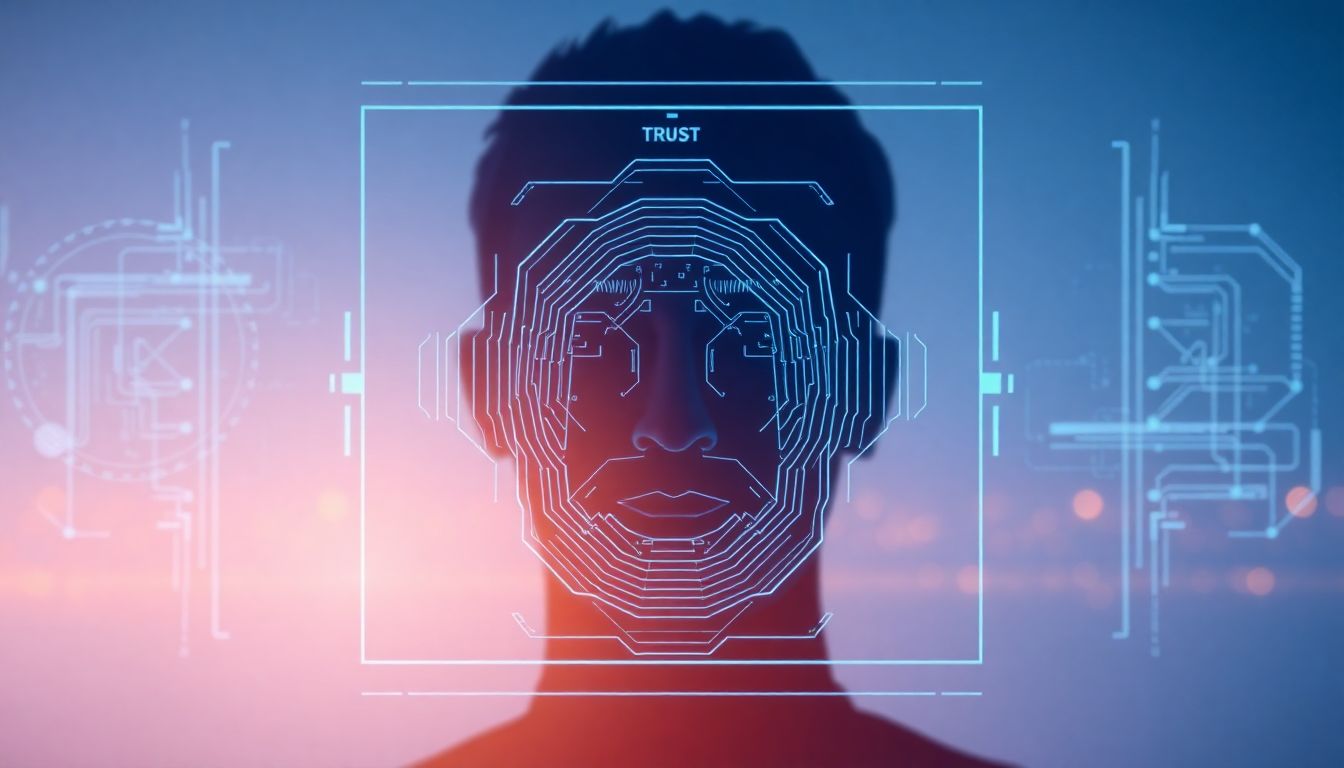Hey there! If you’re wondering about AI KYC verification, you’re not alone—many businesses are curious about making identity checks easier and faster. But don’t worry, I promise that by the end of this, you’ll see how AI can actually take the hassle out of the process. And guess what? It’s already shaping how companies handle customer verification in 2025, making it smoother than ever. Keep reading to learn how you can get started and why now’s the perfect time!
Key Takeaways
Key Takeaways
- AI KYC in 2025 is fast, accurate, and reduces manual work by analyzing documents and biometric data within minutes. It detects fake IDs and flags suspicious activity automatically.
- Using AI can cut verification costs by half, improve accuracy, and speed up onboarding, helping businesses stay compliant and offer better customer experiences.
- Key technologies include facial recognition, document analysis, and tampering detection, all integrated through easy-to-use platforms that minimize errors and fraud chances.
- Challenges remain, such as false negatives, data bias, quality issues, and privacy concerns. Ongoing updates and human oversight are necessary for reliable results.
- Choosing the right AI KYC solution involves assessing your needs, ensuring compliance, testing document handling, and evaluating support and costs to support growth.
- Properly integrating AI KYC into your workflow requires planning, testing, staff training, and maintaining data privacy. Continuous review helps keep the system effective against evolving fraud tactics.
- Future AI KYC will include more biometric options like voice recognition and blockchain security, with a mix of AI and human review to handle complex cases better.

How AI KYC Verification Works in 2025
By 2025, AI-driven KYC (Know Your Customer) verification has become lightning fast and highly accurate. Instead of hours of manual document checks, AI now analyzes customer data in minutes. It uses machine learning algorithms to scan IDs, passports, and utility bills for authenticity, flagging suspicious items instantly. Biometric technologies like facial recognition compare live images with ID photos, confirming identities with near-infallible precision.
Deepfake detection tools and tampering analysis are also built into AI systems, making sure submitted documents are real. The AI platform then consolidates all data — such as name, address, and photo — to verify that the information matches across different sources. This process is often integrated into a seamless, end-to-end automation, reducing human involvement and minimizing errors.
In essence, AI in 2025 doesn’t just verify identities — it continually learns and adapts to new fraud tactics, catching patterns that old systems would miss. This makes onboarding new clients faster, safer, and more reliable for financial institutions and service providers alike.
Benefits of Using AI for KYC in 2025
Using AI for KYC this year means your verification process can cut costs by up to half. Banks and companies save big on manual labor and reduce compliance penalties thanks to AI’s high accuracy. Plus, the speed is incredible — documents that used to take hours to review can now be verified in minutes.
Accuracy keeps getting better with machine learning algorithms that adapt to new types of fraud, like deepfakes and fake documents. This reduces false positives, so your compliance team isn’t bogged down chasing phantom frauds. And with real-time monitoring, suspicious transactions are flagged immediately, making the entire process more secure.
Best of all, AI automates the entire KYC journey — from classification of documents and data extraction to tampering detection and verification. For businesses looking to scale, this means faster onboarding, better compliance, and happier customers — pretty much a win-win.
Key Technologies Behind AI KYC Verification Today
At the core of AI KYC are technologies like machine learning algorithms that continuously improve their accuracy. Facial recognition software ensures that a selfie matches the ID picture, making impersonation nearly impossible. Natural language processing helps interpret text on documents and cross-reference details with official databases.
Image analysis tools are used to detect if IDs are fake or modified. AI models also analyze biometric data to confirm identity via fingerprint or iris scans, if needed. Some platforms combine these with anti-tampering software that detects manipulated images or documents, ensuring integrity every step of the way.
Automation tools like no-code AI platforms (such as *Arya.ai*) simplify integration, letting companies set up verification workflows quickly without needing a tech team. All these combined create a robust system that’s tough to fool and easy to operate.

8. Challenges and Limitations of AI KYC Verification in 2025
While AI makes KYC faster and more accurate, it’s not without its hiccups.
False negatives can occur if the AI system fails to recognize a fraudulent document or face, letting some bad actors slip through.
Bias in training data can lead to unfair treatment of certain demographic groups, which is a concern for compliance and ethics.
Some AI systems struggle with poor quality images or documents, especially if customers upload blurry or damaged photos.
Real-time fraud tactics are always evolving, and AI models need constant updates to stay ahead; otherwise, they can become outdated quickly.
There’s also the risk of over-reliance, where businesses might ignore traditional checks that still hold value in complex cases.
Data privacy is another issue—collecting and processing biometric data raises questions about user consent and secure storage.
Lastly, AI platforms can be costly upfront, and smaller firms might find it tricky to implement without proper guidance or infrastructure.
Understanding these flaws helps in designing a balanced approach, combining AI with human oversight when necessary.
9. How to Choose the Right AI KYC Solution for Your Business
Picking the right AI KYC tool boils down to knowing your needs.
Start by assessing your customer volume — a high influx requires scalable solutions that don’t bottleneck onboarding.
Look for platforms that integrate easily with your existing systems—no-code options like *Arya.ai* might be a good fit.
Check the compliance features, especially their ability to meet regulations like AML and GDPR, which are crucial in financial services.
Prioritize solutions with continuous learning capabilities, so your system adapts over time and keeps fraudsters guessing.
Test how well the solution handles different types of documents and images, maybe through trial runs or demos.
Read reviews or case studies to see how similar businesses are using the system successfully.
Budget is key—compare pricing plans and keep an eye on hidden fees or extra charges for updates and support.
And don’t forget support—good customer service can save you headaches when tech issues arise or updates are needed.
By following these steps, you’ll find a tailored AI KYC platform that helps you onboard customers faster and safer.
10. Integrating AI KYC into Your Existing Workflow
To make AI KYC work smoothly, you need a clear plan for integration.
Start by mapping out your current onboarding process and identifying bottlenecks or repetitive tasks.
Choose an AI solution that can plug into your existing CRM, compliance, and document management systems—preferably one with no-code setup.
Set up automation rules for document classification, data extraction, and flagging suspicious activity.
Test the entire flow with a small group of users to iron out glitches before full deployment.
Train your team on how to interpret AI alerts and handle exceptions, because machines aren’t perfect yet.
Establish protocols for manual review of cases flagged by AI to catch anything the system might miss.
Make sure your data privacy policies are up to date and clearly communicate to customers how their data is used.
Regularly review system performance and update your AI models — fraud tactics evolve fast.
Remember, successful integration is an ongoing process, not a one-time setup — flexibility is key.
11. Future Outlook: Where Is AI KYC Verification Heading?
Looking ahead, AI KYC is set to get even smarter.
We’ll likely see more advanced biometrics, like voice recognition, becoming part of verification workflows.
The integration with blockchain could enhance data security, making identity verification tamper-proof.
Hybrid systems combining AI with human oversight will become standard, ensuring complex cases get proper attention.
As regulations evolve, AI solutions will adapt to meet new compliance demands more efficiently.
Expect more real-time usage, with AI monitoring customer behavior and transactions continuously for signs of fraud.
Smarter AI will also analyze patterns across multiple data sources, spotting scams before they fully develop.
We might even see personalized onboarding experiences powered by AI, making customer journeys smoother.
In a nutshell, AI KYC will keep improving, but the human element will remain crucial for handling nuanced situations.
If you’re thinking long-term, investing in flexible, regularly updated AI technology should be your priority.
FAQs
AI KYC verifies customer identities by analyzing documents and faces with advanced machine learning models, ensuring accuracy and speed while reducing manual checks. It matches biometric data and documents for quick, reliable customer onboarding.
Using AI in KYC enhances onboarding speed, reduces errors, improves fraud detection, and ensures compliance. It provides a seamless experience and minimizes manual processing, saving time for both businesses and customers.
Key technologies include optical character recognition (OCR), facial recognition, machine learning algorithms, and biometric analysis. These tools work together to verify identities accurately and swiftly during the KYC process.
Start by selecting a reliable AI KYC solution, integrate it with existing systems, train staff on its use, and ensure compliance with regulations. Regularly update the system to adapt to new fraud tactics and technological advancements.